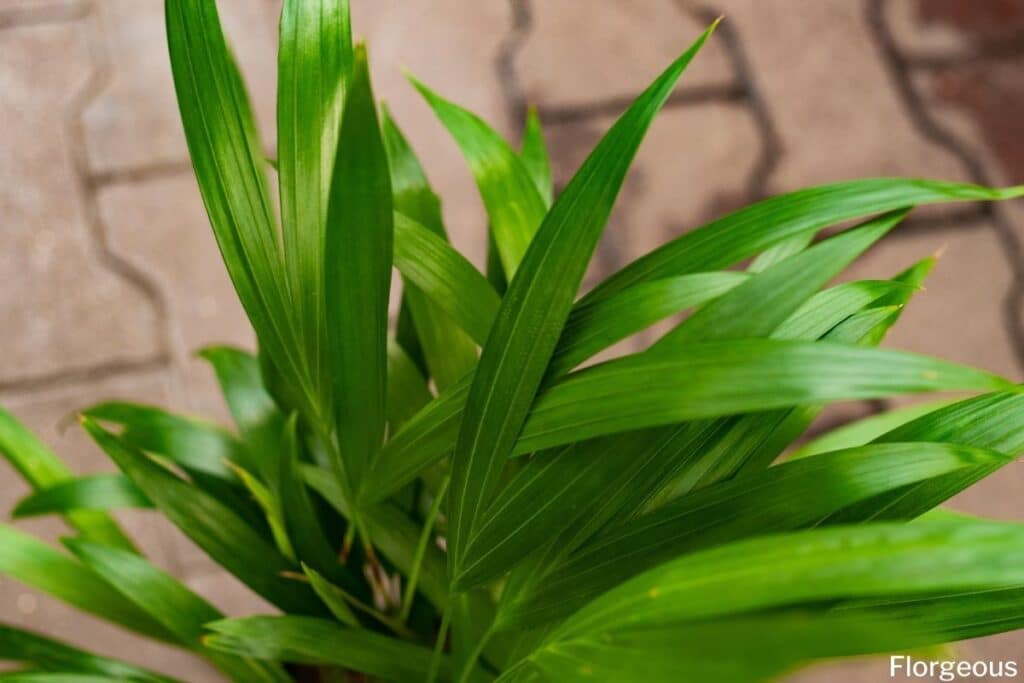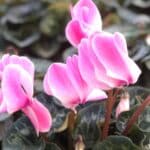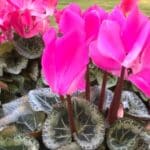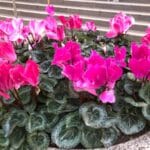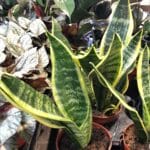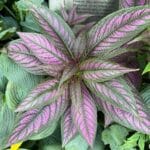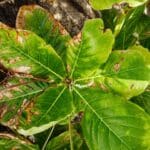If you want that aesthetic and functionality in one, the Areca palm plants are perfect for you. Although, you might have some preferred characteristics you want to take into consideration. Fret not, there are more than 100 species of Dypsis, and here are the top 16 you should know about.
Commonly Grown Dypsis Varieties
Dypsis lutescens
The Dypsis lutescens species is also known as areca palm, golden cane palm, butterfly palm, yellow cane palm, yellow areca palm, yellow palm, bamboo palm, and Madagascar palm. This plant is one of the commonly utilized palms in the landscaping industry.
It came from the Le Reunion and Eastern parts of Madagascar. It has two known varieties under this species namely, galuscens and super dwarf.
The main reason why it is a famous species for growers is that it can be grown both indoors and outdoors easily. Also, it has a beautiful yellow tint in its fronds and stems. Sometimes some varieties show bluish tints in different plant parts.
In terms of taking care of this plant, it loves bright indirect light but can tolerate full exposure. These indoor palm plants thrive in areas with moist but well-drained soils with high organic matter content. Given these requirements, it thrives in USDA plant hardiness zones 10 to 11.
If you want to reproduce this plant, it can be done by planting the seeds or suckers. If propagated by seeds, it would take roughly around 2 to 6 months before seedlings form. On the other hand, dividing the suckers or offshoots from the basal part of the palm is more efficient because of the already established root system.
Dypsis decaryi
Commonly known as the triangle palm, three-sided palm, three-ranked palm, or triangular palm, this plant is from the southern parts of Madagascar. Its common names giveaway this species’ distinct characteristic, which is its three-tiered leaf arrangement.
Because of this triangular leaf formation, the trunk looks thicker. Its foliage is curved and waxy with different hints of blue and green, silver, or gray. The whole plant may reach up to 20 feet high during maturity. Also, it bears yellow flowers that turn to black berry-like fruits. It blooms and fruits in all seasons. In some areas, the fruits are being eaten or turned into an alcoholic beverage.
In terms of the environment this plant prefers, indoor palm trees are highly favored. It thrives in full sun to low-light exposures and loose and occasionally dry soils. It grows in USDA zones 10-11 and is drought resistant.
According to the IUCN, it is considered a vulnerable species. This means that this palm species could face extinction if not cared for.
Dypsis utilis
This species is endemic to moist and warm locations, specifically from the eastern parts of Madagascar. It grows rapidly and bears a light brown body and light pink crown. When its leaves dry up, they hang like a pendulum and sometimes cover the trunk. As the palm matures, it bears purple or red flowers and black fruits.
In terms of growing this, it prefers moist soil in humid environments. Pruning of the fronds is also recommended for it to not cover the plant and cause some problems. If you want to propagate this palm, the best way to do it is by separating the offshoots.
Dypsis baronii
The D. baronii is a palm that has multiple stems that bear feather-like leaves. It can extend for 2 to 8 meters high with 4 to 8 leaves. It is endemic to North, East, and Central Madagascar meaning it can survive in different climates and environments. This palm often appears in groups of 3 to 5.
If you are looking for a palm that would withstand cold temperatures, this palm thrives in USDA zone 9a. Although, taking care of this palm may be a bit tricky as it is highly biased to shaded, moist, and well-drained places.
Aside from its ornamental value, it also bears sweet and edible fruits.
Dypsis lanceolata
This species is also known as the Ivovowo Palm and it came from the Comoro Islands. Its aesthetic value comes from its clustered appearance. Also, it can go up to 6 meters high and its trunk resembles a bamboo with rings making segments on the trunk. As another characteristic that makes this plant, a good ornamental palm is its dark green fronds that are wide and glossy. This plant is famous with palm enthusiasts.
This plant thrives in areas that are partially shaded, warm, and well-drained. Unlike other species, this palm is more sensitive to cold temperatures. It grows well in USDA hardiness zones 10 to 11.
Dypsis prestoniana
The D. prestoniana is also referred to as the tavilo palm, stumpy dypsis, or babovavy. It came from the moist forestlands of Madagascar. It has one true trunk, which can extend from 4 to 12 meters in height, bearing spirally attached 8 to 10 leaves. The leaf nodes are golden brown that transitions to a smooth light green leaf petiole that is waxy. The flowers of the tavilo palm are erect and branched with hints of yellow and brown.
One of the most common varieties under this species is the Dypsis prestoniana ‘Big Curly’. This variety is more distinct due to its huge size. It is drastically bigger than the tavilo palm, wherein the big curly can reach up to 4 times the normal size of the tavilo. Another notable characteristic is its curly and more open foliage that is mostly green and stays green.
Dypsis sp. ‘Betefaka’
The Betefaka is known to have a big major root that is the main source of anchorage of the whole palm. Moreover, this variety is discovered in Africa and could withstand cold conditions in USDA zone 10. Its leaves are curled and attached to a reddish-brown stem. Although, in younger leaves, the basal part is more of an orange to a red-orange tone.
The best way to take care of them during their younger years is to give them bright dappled light and occasionally dry soil. Watering should be done when the soil looks dry as the plant is sensitive to too much moisture. Also, remember to keep the heel above ground with good air circulation. Keep an eye out for potential problems such as scale insects and leaf rust.
Dypsis sp. ‘Big Red’
The Big Red is found in the forests of Madagascar. Currently, no studies are proving what species this palm is under. However, some are saying it is related to the D. lastelliana. The crown shaft of this palm tends to be red while the lower part is black.
Dypsis sp. ‘Black Stem’
The Black stem is a clustering parm and was first seen in Vakona Lodge. This variety falls under D. baronii and exhibits a black to blood red gradient on its stems.
Dypsis sp. ‘Chamaedorea’
The Chamaedorea is under the Dypsis genus but got its common name due to the similarities from another genus. This solitary palm stands out with its entire bifid leaves with a wavy leaf margin, which is not common to other Dypsis species. Moreover, the leaves exhibit green foliage with a hint of blue. In terms of height, this plant can group up to 3 meters high.
Dypsis sp. ‘Dark Mealy Bug’
This solitary palm variety is known to be short during its younger stages. Another notable characteristic during its younger phase is the markings on this palm’s petioles. From its name, the marking resembles dark mealy bugs. Also, it has maroon-colored midribs and white cast from the shaft to the trunk. This majestic palm then grows taller as its foliage expands. It can withstand cold temperatures up to USDA zone 10a.
Dypsis sp. ‘Orange Crush’
The orange crush came from the forestlands of Madagascar, namely the Marojejy, Sambirano regions, and Mantady. This variety of areca palm is often confused with D. pilulifera due to similarities in morphology.
Moreover, the orange crush is known to have a vast growth habit with a strong trunk bearing glossy green leaves. It got its name from having an orange crown shaft that changes to green eventually. Its natural habitat is warm and humid. Hence, it prefers to be in similar environments. It can withstand up to USDA zone 10a.
Threatened species
Dypsis brittiana
This species is listed as critically endangered. The IUCN did not find any presence of this plant in other places aside from Makira Natural Park. So far, there is a seed harvest program in place in an attempt to revive the species.
Dypsis decipiens
The Manambe palm or Dypsis decipiens is listed under the vulnerable species list. Currently, horticultural organizations are helping to protect this species.
Dypsis Ambositrae
This species is also considered a critically endangered species.
Dypsis tokoravina
Another critically endangered palm is the Dypsis tokoravina. According to research, there are approximately 30 remaining in the wild. The main culprit for the vast decline in this species’ population is seed collectors. Some would harvest the seeds and cut down the palm, to increase the value of the seed.
Reminders in Choosing Your Areca Palm
There may be hundreds of species and varieties of Areca palm to choose from but there are some factors that you should consider before getting one. First, determine the function of this plant for your landscape. It may be a foundation, a screen plant, or an indoor plant. In determining the functionality, you can narrow down your options by choosing characteristics that will be suitable. For example, when you want a screen plant, choose one that has large leaves and a vast growth habit. These characteristics will be highly favorable as a screen.
Another thing to consider is the location where you are going to put your areca palm tree. Is it inside or outside? Will it be exposed to full or partial sunlight or full shade? These factors will affect the type of Dypsis you would want to choose from since they vary in bright light requirement.
Then, you also need to consider how much time you have to tend to your plant. There are Areca palms that are low maintenance but there are some that need more care than other palms. For example, the Betefaka’s watering schedule will vary from time to time as the weather changes and depending on the soil too.
This variety is sensitive to too much moisture and humidity. Hence, it might need more time and effort to grow. In line with this reminder is learning to listen and observe your plant. Different signs and symptoms are visible cries for help.
Lastly, remember your ecological duty. In the latter parts of this article, the threatened species were mentioned. If you know people who poach and sell these, it is important to let the authorities know. As a responsible plant owner, you should work hand in hand with the different horticultural organizations that aim to protect the species from poachers and illegal seed collectors.
FAQs
Is areca palm the same as bamboo palm?
No, Areca palm (Dypsis lutescens) and Bamboo palm (Chamaedorea seifrizii) are different plant species. Areca palm is known for its feathery, arching fronds, while Bamboo palm has slender, cane-like stems.No, Butterfly palm is another name for Areca palm (Dypsis lutescens). They refer to the same plant, characterized by its graceful, feather-like fronds.
Is butterfly palm same as areca palm?
No, Butterfly palm is another name for Areca palm (Dypsis lutescens). They refer to the same plant, characterized by its graceful, feather-like fronds.
What is the difference between Kentia and Areca palms?
Kentia palm (Howea forsteriana) and Areca palm (Dypsis lutescens) differ in their appearance. Kentia palm has dark green, upright fronds with a more formal and elegant look, while Areca palm has softer, feathery fronds with a more tropical appearance.
Why are Kentia palms expensive?
Kentia palms are often considered expensive due to their slow growth, making them more challenging to cultivate and requiring several years to reach a desirable size for sale. Additionally, their popularity as an indoor plant contributes to their higher market value.?
See more: Types of Bamboo Palm (Chamaedorea)

